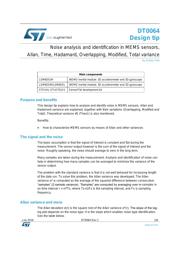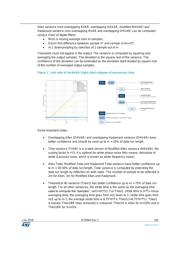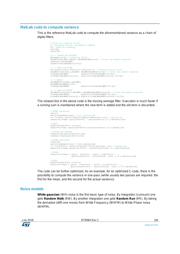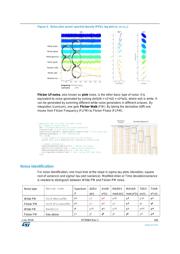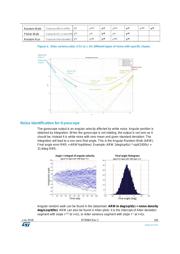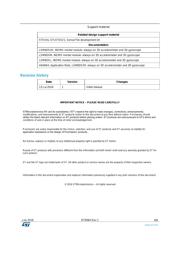Datasheet 搜索 > 加速度传感器 > ST Microelectronics(意法半导体) > LSM9DS1 数据手册 > LSM9DS1 产品描述及参数 1/6 页

 器件3D模型
器件3D模型¥ 33.076
LSM9DS1 产品描述及参数 - ST Microelectronics(意法半导体)
制造商:
ST Microelectronics(意法半导体)
分类:
加速度传感器
封装:
LGA-24
描述:
iNEMO惯性模块:3D加速计,3D陀螺仪,3D磁力计
Pictures:
3D模型
符号图
焊盘图
引脚图
产品图
LSM9DS1数据手册
Page:
of 6 Go
若手册格式错乱,请下载阅览PDF原文件

July 2016
DT0064 Rev 1
1/6
www.st.com
DT0064
Design tip
Noise analysis and identification in MEMS sensors,
Allan, Time, Hadamard, Overlapping, Modified, Total variance
By Andrea Vitali
Main components
LSM6DS3H
iNEMO inertial module: 3D accelerometer and 3D gyroscope
LSM6DSM/LSM6DSL
iNEMO inertial module: 3D accelerometer and 3D gyroscope
STEVAL-STLKT01V1
SensorTile development kit
Purpose and benefits
This design tip explains how to analyze and identify noise in MEMS sensors. Allan and
Hadamard variance are explained, together with their variations (Overlapping, Modified and
Total). Theoretical variance #1 (Theo1) is also mentioned.
Benefits:
How to characterize MEMS sensors by means of Allan and other variances
The signal and the noise
The basic assumption is that the signal of interest is constant and flat during the
measurement. The sensor output however is the sum of the signal of interest and the
noise. Roughly speaking, the noise should average to zero in the long term.
Many samples are taken during the measurement. Analysis and identification of noise can
help in determining how many samples can be averaged to minimize the variance of the
sensor output.
The problem with the standard variance is that it is not well behaved for increasing length
of the data run. To solve this problem, the Allan variance was developed. The Allan
variance σ
2
is computed as the average of the squared difference between consecutive
“samples” (2-sample variance). “Samples” are computed by averaging over m-samples in
an time interval τ = m*Ts, where Ts=1/Fs is the sampling interval, and Fs is sampling
frequency.
Allan variance and more
The Allan deviation σ(τ) is the square root of the Allan variance σ
2
(τ). The slope of the log-
log plot depends on the noise type. It is the slope which enables noise type identification.
See the table below.
器件 Datasheet 文档搜索
AiEMA 数据库涵盖高达 72,405,303 个元件的数据手册,每天更新 5,000 多个 PDF 文件
